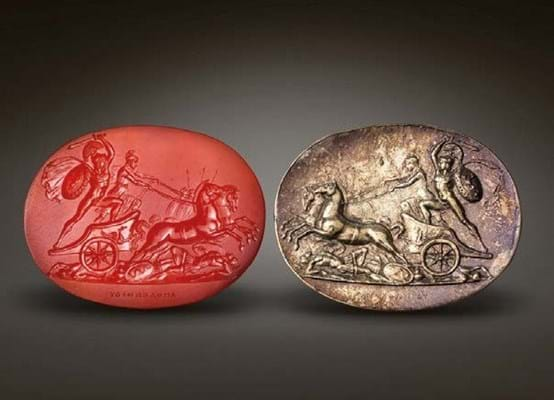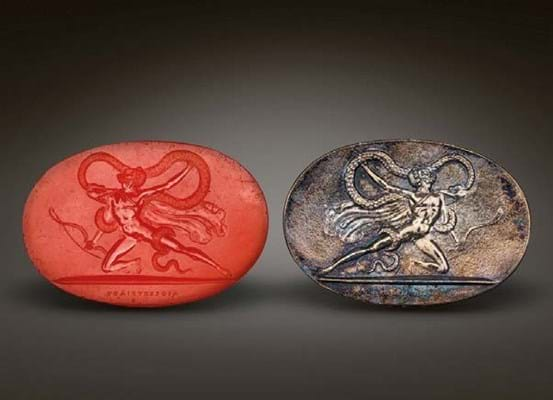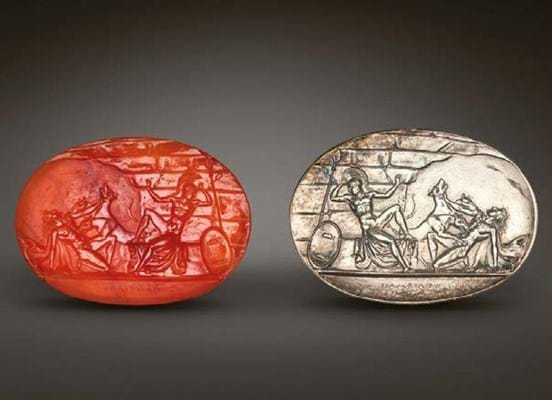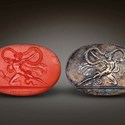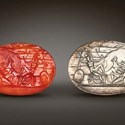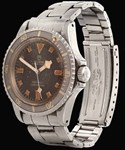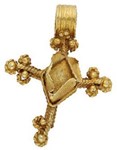In 2019, for example, the firm sold a rediscovered Renaissance sapphire intaglio ring from the celebrated Marlborough collection for £62,000.
On April 7 aficionados of the glyphic arts will have a rare opportunity to purchase a private collection of no fewer than 100 hardstone intaglios, 98 of which formed part of the remarkable collection of 2601 gems accumulated by Prince Stanislas Poniatowski (1754-1833), nephew of the King of Poland.
Each component is accompanied by a faithful electrotype casting, while detailed descriptions are provided in a special bound catalogue. The gems are mounted on two purpose-built display frames made by jeweller Collingwood & Co when the collection was last sold in the 1970s.
The story of the Poniatowski gems was one of the great art scandals of its day. His gems themselves were beautifully engraved with classical or mythological subjects as well as the names of prominent Greek artists from antiquity such as Pyrgoteles, Aulus, Gaius and Dioscorides. From a purely technical point of view the quality of the engraving on each gem was truly outstanding – and therein lay the fatal flaw; they were simply too good to be true.
After the prince’s death it was discovered that instead of being ancient originals, the gems were actually modern fakes produced by a number of leading contemporary hardstone engravers including Giuseppe Girometti and brothers Giovanni and Luigi Pichler.
Needless to say, if these craftsmen had put their own name to their work rather than masquerading as engravers from ancient Greece then the Poniatowski collection would have rightly been seen as among the finest examples of Grand Tour gem engraving in existence. Instead, the gems were stigmatised, regarded as near worthless and through the 19th century and much of the 20th proved almost impossible to sell.
These days Poniatowski gems come up for auction relatively frequently and are eagerly collected. Depending on subject matter and condition, each tends to fetch anything between £1500 and £3000. In 2020 Bonhams sold a group of 10 for just over £19,000 (including premium) and another single gem a few months later for £2800. Sotheby’s sold a fine hardstone example of Hercules, mounted as a ring, for £8125 although this may have been something of a one-off.
Woolley & Wallis is offering its own particular collection as a single lot with an eye-catching £40,000-60,000 estimate. Since this is the first time that such a large number of the gems has been offered together since the mid-19th century, they are likely to generate considerable interest.



